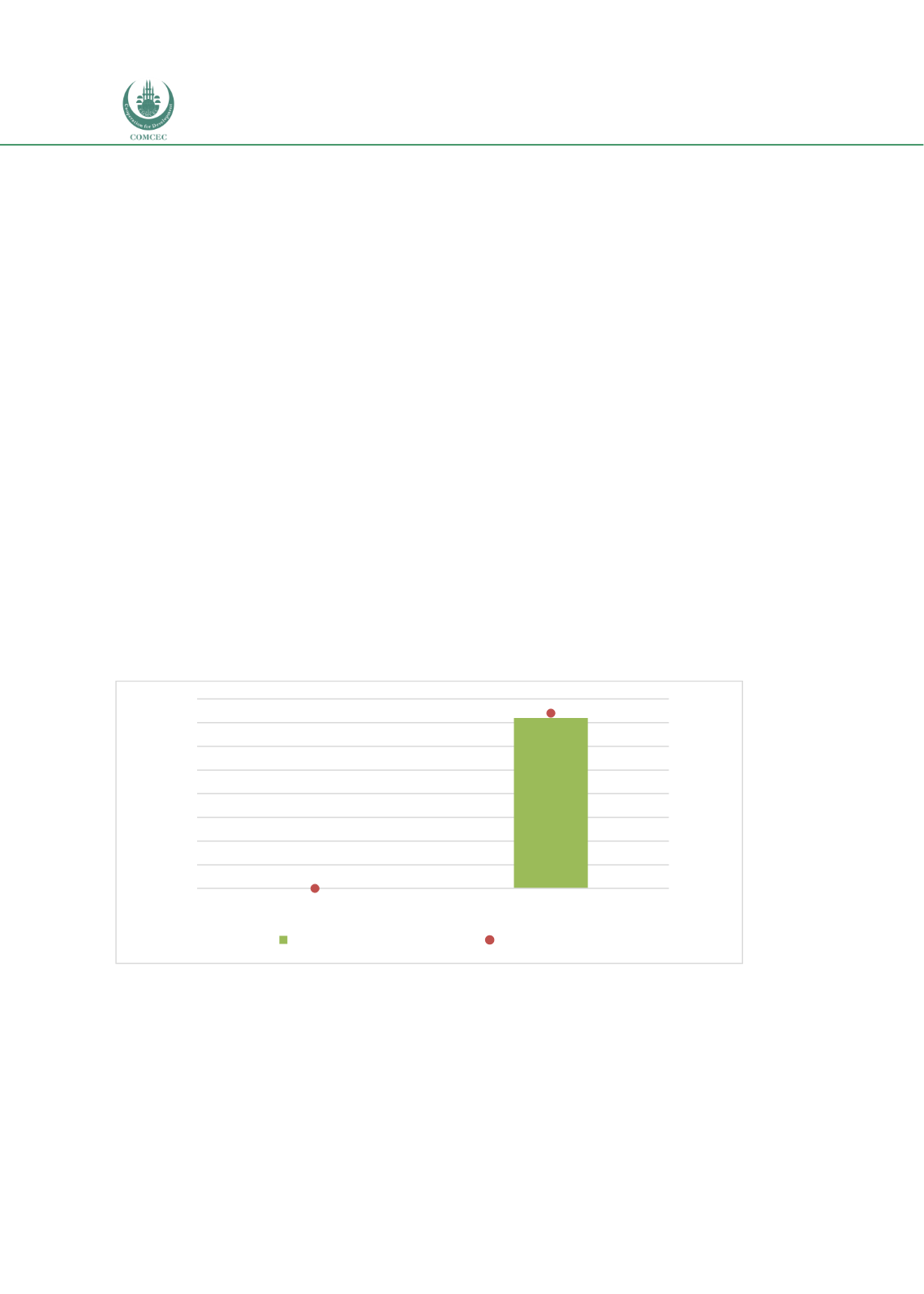

Infrastructure Financing through Islamic
Finance in the Islamic Countries
104
Chart 4.2.10 shows the investor profile of corporate sukuk in Malaysia. The majority (51%) of
sukuk investors belong to the category of “commercial, Islamic and investment banks” while
the insurance sector is the second largest holder of corporate sukuk (33%). The Employees
Provident Fund holds around 10% of the sukuk and the remaining 6% is held by foreign
commercial and Islamic banks. Although the data represents investors for all corporate sukuk,
information from Chart 4.11 implies that around 46% of these are linked to the infrastructure
sector.
The information from these charts and Table 4.3 reveals two interesting aspects of the
Shariah-compliant financing of the infrastructure sector. First, while Islamic banks have the
option of providing direct financing to infrastructure projects, the data shows that they do it in
relatively small amounts and instead prefer to invest in the sector by investing in sukuk
instruments. Second, issuing sukuk can tap into funds from both Islamic and non-Islamic
institutions. However, this is not the case with conventional bonds since it limits the
investments to conventional sources only. Thus, providing Shariah-compliant products to
finance infrastructure projects can attract a larger investment base
4.2.5.4. International Sources
Chart 4.2.11 shows the Islamic financing for infrastructure projects that Malaysia received
from IDB. While 37 projects worth USD 719.8 million were financed during 1976-2016,
Malaysia has not used IDB funds since 2016. The latter figure reflects the strategic decision
Malaysia made after the Asian financial crisis, to not depend on external funds and to instead
focus on raising funds domestically.
Chart 4.2. 11: Number of Projects and Financing from IDB: Malaysia
Source:
https://isdbdata.github.io/monograph2017.html4.2.5.5. Case Studies
In this final subsection, three case studies on sukuk issuances in Malaysia for infrastructure
projects from different sectors is presented. While the first two of these were issued by GLCs to
fund transport and education, the last one is a private sector initiative to finance green energy.
0.0
719.8
0
37
0
5
10
15
20
25
30
35
40
0
100
200
300
400
500
600
700
800
Total Project Financing 2016+
Total Project Financing (1976-2016)
No. of Projects
USD (Million)
Total Financing (US$ Million)
No. of Projects
















